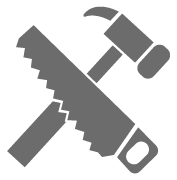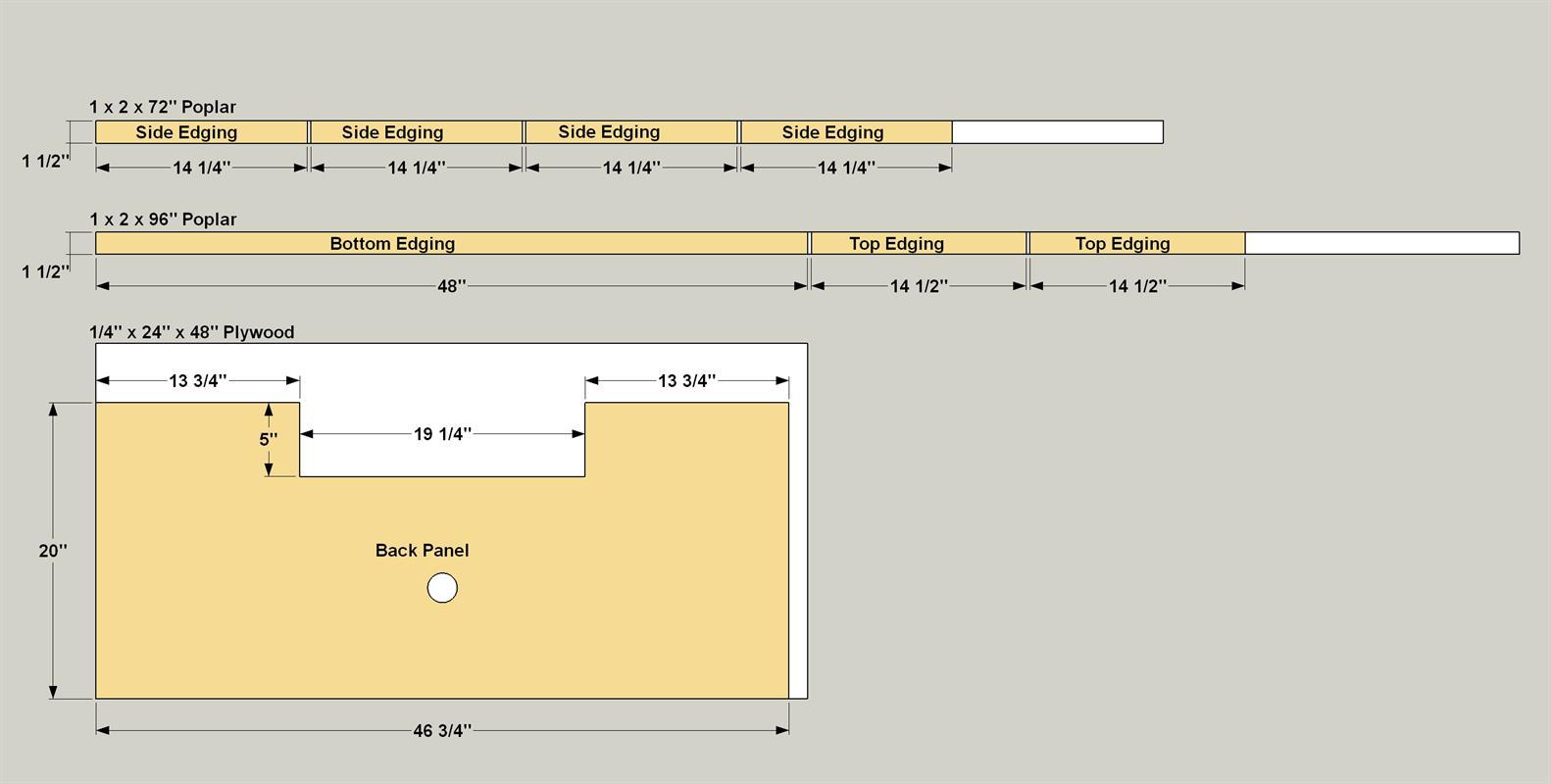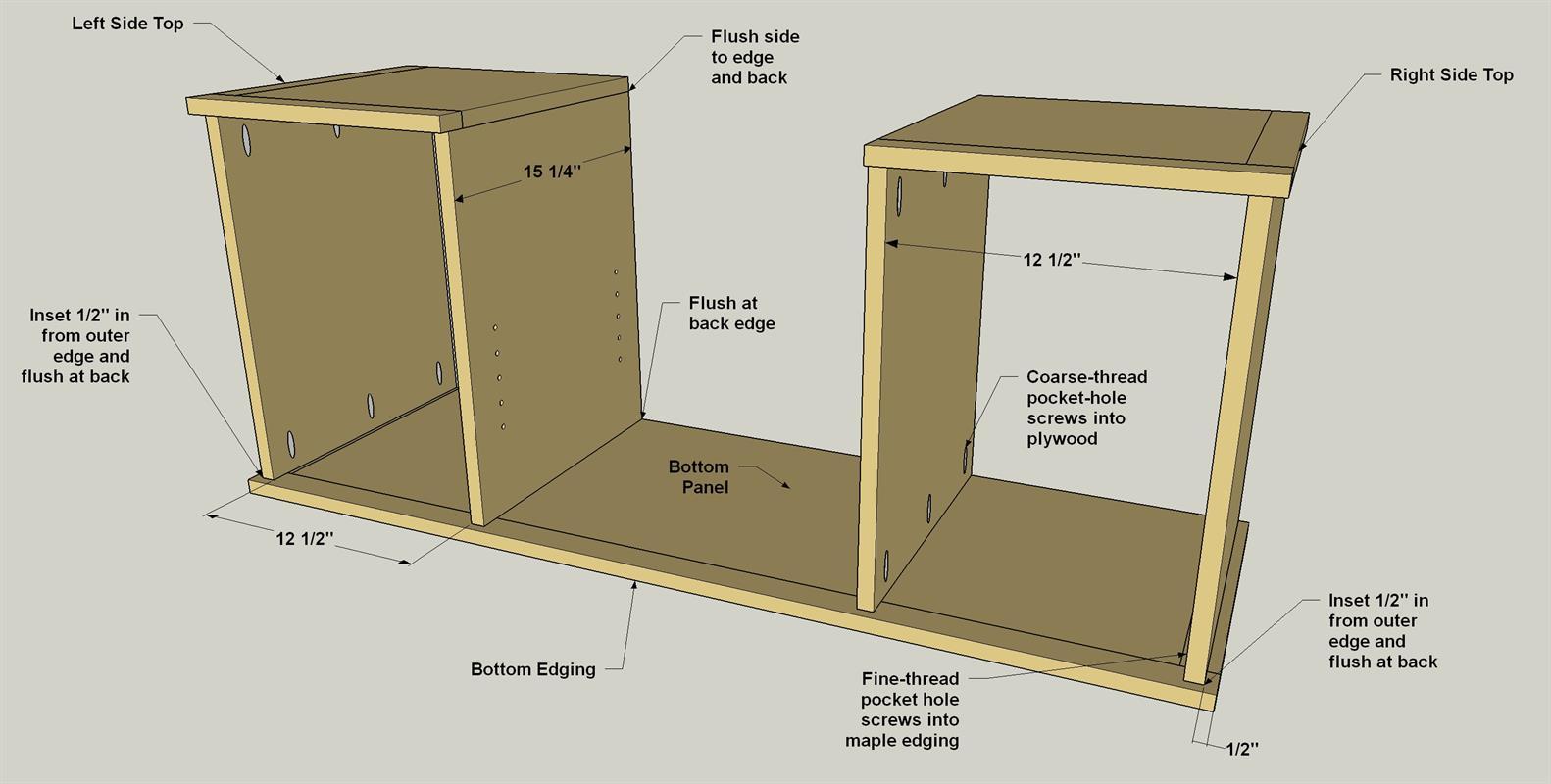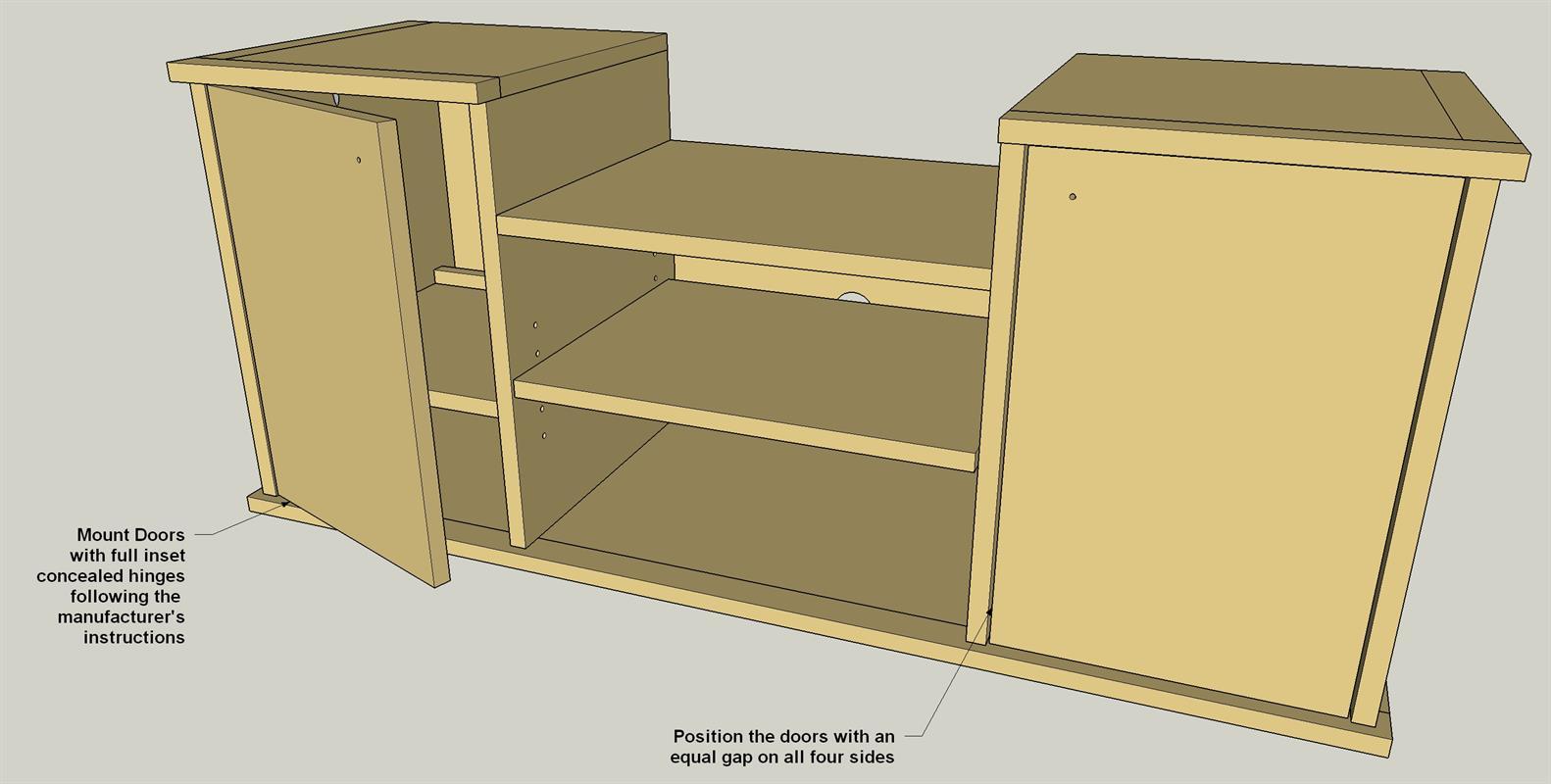Record Player Stand with Storage
By Kreg ToolThere’s a retro revival happening in music as people rediscover vinyl records. This cool cabinet lets you get in on this musical movement by showing off a turntable and offering storage space for your vinyl collection. Built from maple plywood and solid maple, it has a great mid-century style, too.
Directions
-
Make Bottom and Top Panels
Cut one Bottom Panel and two Top Panels from 3/4" maple plywood, as shown in the cutting diagram.
Set your pocket-hole jig for 3/4" material, and then drill pocket holes in these panels at the locations shown. On the Top Panels, apply iron-on edge banding to one edge of each panel, as shown. Trim the edging flush on the ends and edges, then sand lightly to smooth the cuts. -
Create Hardwood Edging
Cut four Side Edging, two Top Edging, and one Bottom Edging to length from 1x2 boards, as shown in the cutting diagram. Drill a centered pocket hole in one end of each of the Side Edging pieces.
-
Attach the Edging
On a flat work surface, lay the Bottom and Top Panels with the pocket holes facing up. Secure the Side Edging to the Bottom and Top Panels first using 1 1/4" fine-thread pocket-hole screws. Next, attach the Top Edging and Bottom Edging using 1 1/4" fine-thread pocket-hole screws.
-
Make the Outside Panels
Cut two Outside Panels to size from 3/4" plywood, as shown in the cutting diagram. Drill pocket holes at the locations shown. On one long edge of each panel, apply iron-on edge banding to one edge of each panel, as shown. Trim the edging flush on the ends and edges, then sand lightly to smooth the cuts.
-
Make the Inside Panels
Cut two Inside Panels to size from 3/4" plywood. as shown in the cutting diagram. Drill pocket holes at the locations shown. On the face of each Inside Panel that does not have pocket holes, drill shelf pin holes, as shown. The easiest way to do that is to use a Kreg Shelf Pin Jig. On one long edge of each panel, apply iron-on edge banding to one edge of each panel, as shown. Trim the edging flush on the ends and edges, then sand lightly to smooth the cuts.
NOTE: The setback spacing (distance from the edge to the shelf-pin holes) shown matches the first-generation Kreg Shelf Pin Jig. The second generation model, released in March 2022, has different setback spacing. The vertical distance between the pin holes, though, matches the dimensions shown here—1 1/4". You can create the shelf-pin holes accurately using either the first- or second-generation jig.
-
Attach the Side Panels to the Tops
Now you can attach the Inside and Outside Panels to the Tops. Lay the Left and Right Top panel out, as shown. Then Position each Inside Panel on each Top Panel, as shown. Make sure that the shelf pin holes face outward and the outside face is flush with the outside edge of the Top and flush at the back, as shown. Secure it in place with 1 1/4" coarse-thread pocket-hole screws. Next, Position each Outside Panel on each Top with the pocket holes facing in. Inset the panel 1/2" in from the outside edge of the Top and flush at the back edge as shown. Secure it to the Top with 1 1/4" fine-thread pocket-hole screws—the fine-thread screws are the right choice here since they’re being driven into the hardwood edging instead of into the plywood.
-
Attach Side Cases to the Bottom
Lay the Bottom Panel on a work surface with the pocket holes facing down. Position each side case assembly on the Bottom Panel making sure the assembly is located with the proper insets, as shown. Secure the Outside Panel to the Side Edging on the Bottom using 1 1/4" fine-thread pocket-hole screws. Then secure the Inside Panel to the plywood Bottom using 1 1/4" coarse-thread pocket-hole screws.
-
Make the Fixed Shelves
Cut two Fixed Cabinet Shelves and one Fixed Middle Shelf to size as shown in the cutting diagram. At the locations shown, apply iron-on edge banding, and then trim and sand it.
-
Attach the Fixed Shelves
Using some scrap pieces of 1x6 as spacers, set the Shelves in position as shown. Secure the Shelves to the Sides using 1 1/4" coarse-thread pocket-hole screws.
-
Make the Back Panel
From 1/4" thick plywood, cut the Back Panel to size and shape as shown in the cutting diagram. Locate and drill the cable hole with a 2" Forstner bit. Lay out the holes for attaching the Back to the Case, and drill 1/8" pilot holes at those locations.
-
Attach the Back
Clamp the Back to the case making sure there is a 1/8" space on each side, and then secure the Back to the main assembly using #8 x 3/4" pan-head wood screws.
-
Make Doors and an Adjustable Shelf
Cut one Adjustable Shelf to size, as shown in the cutting diagram. Then apply iron-on veneer edge banding to the forward edge, as shown. Next, cut two Doors to size, as shown in the cutting diagram. Apply iron-on veneer edge banding to all four edges of the Doors, as shown. Lay out the location for the door knobs and drill 3/16" pilot holes in each door. Next, Lay out and drill hinge-cup holes for the full-inset concealed hinges. To do this, you’ll need the instructions that come with the hinges. It’s also much easier to do this using a jig, such as the Kreg Concealed Hinge Jig. Mount the Hinges to the Doors.
-
Mount the Doors
Mount the doors to the cabinet, as shown, using the manufacturer's instructions. Make sure the doors have equal spacing at the top and bottom. Adjust the hinges using their built-in adjustment screws to even out the side gaps. Once the finish dries, you can install knobs on the drawers, and then attach the legs
-
Finish and Add Final Hardware
With assembly mostly done, you can do any final sanding that’s needed, and then apply a finish to your record player stand. We rubbed on three coats of a natural oil finish to complete the mid-century look. Once the finish dries, you can install knobs on the drawers, and then attach the legs as shown. Insert shelf pins, and finally drop in the Adjustable Shelf.
































